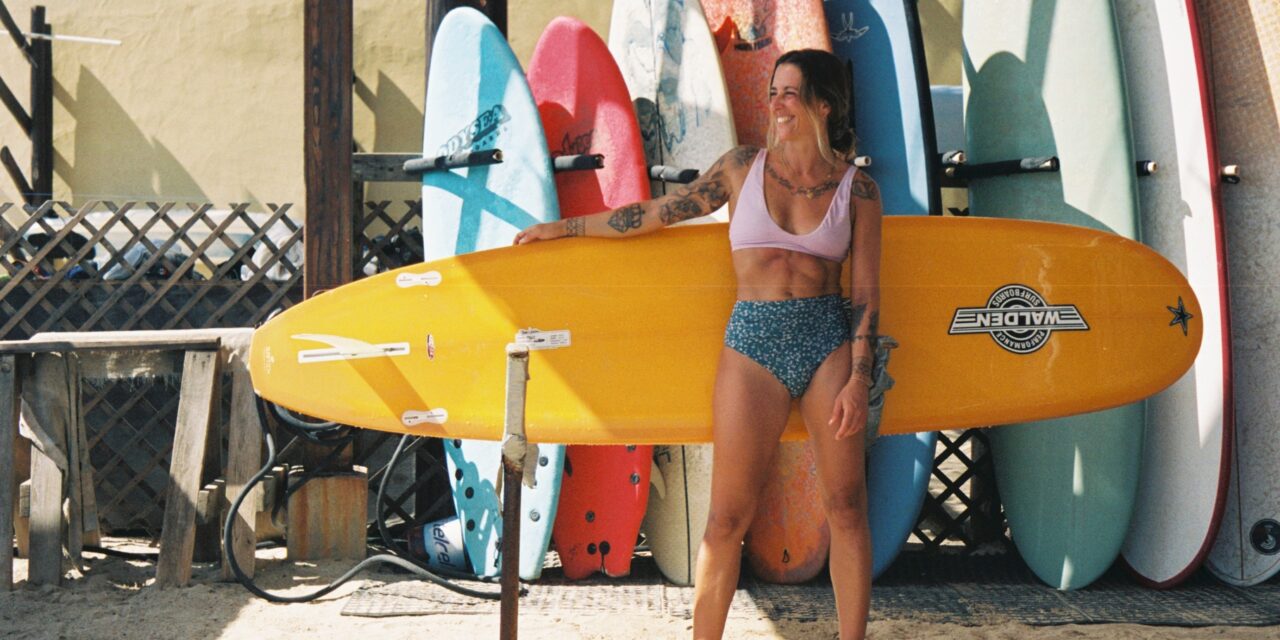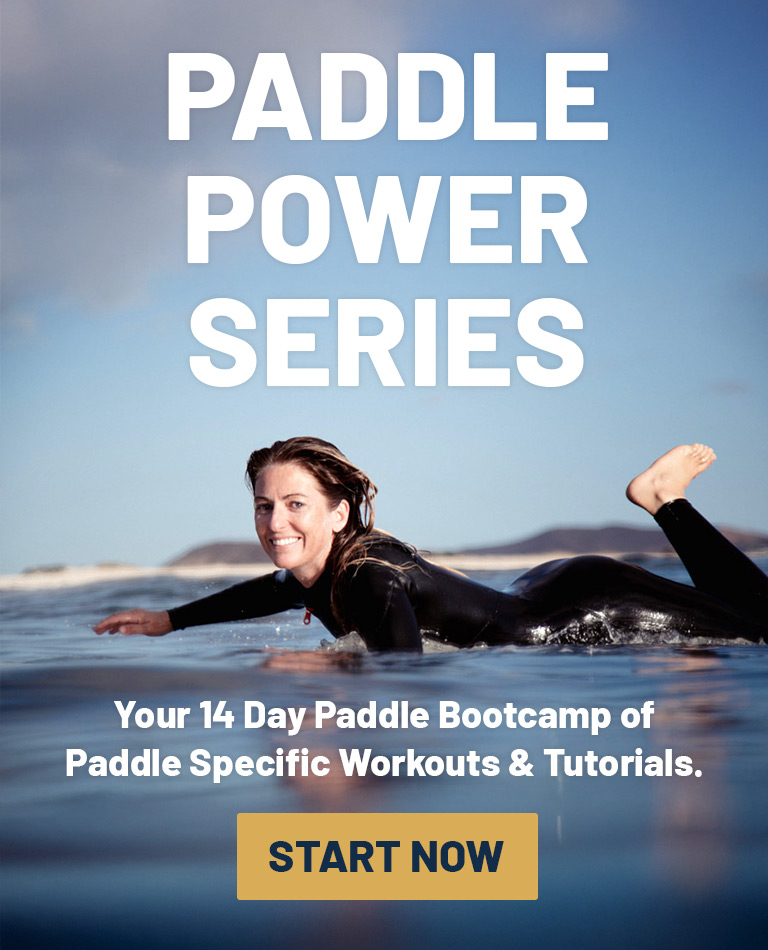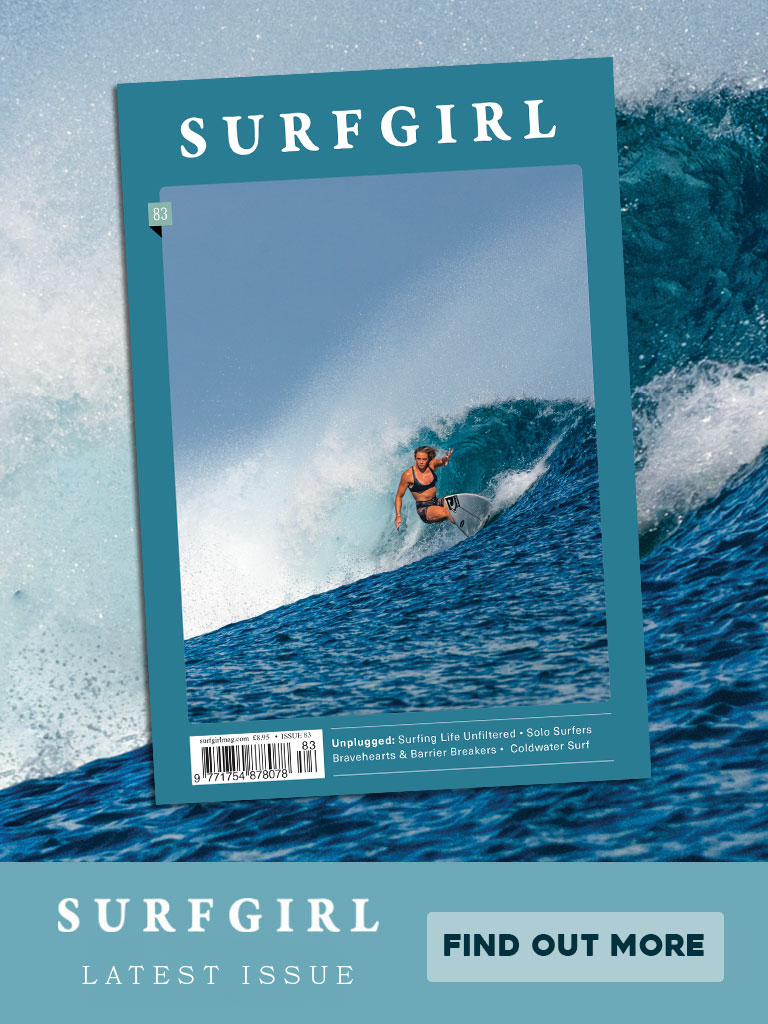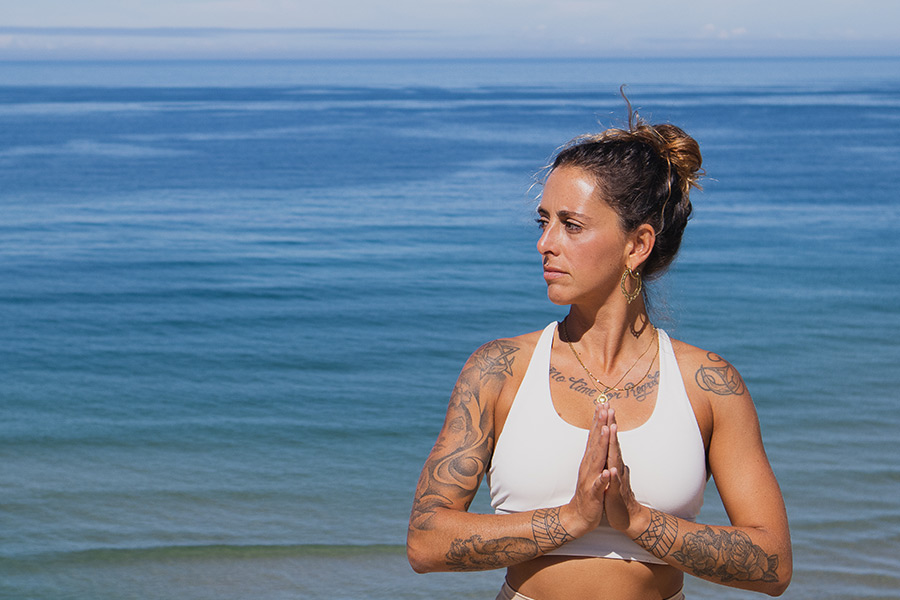
Yoga and surfing go hand in hand, which is why we’re so happy to have Ines onboard as our latest Premium yoga instructor. Yoga is so beneficial to surfers, so let’s find out more about this and how Ines classes can help your surfing.
Ines, tell us a bit about yourself, where you’re from and what you do?
I am a 500 hours YTT Yoga teacher, originally from Portugal, grew up close to the beach on the west coast. I have travelled and lived abroad for 5 years all over the world, and have been based back in Portugal for 5 years now. I started teaching back in 2017, and for the last few years I’ve been running my Yoga Classes and Retreats
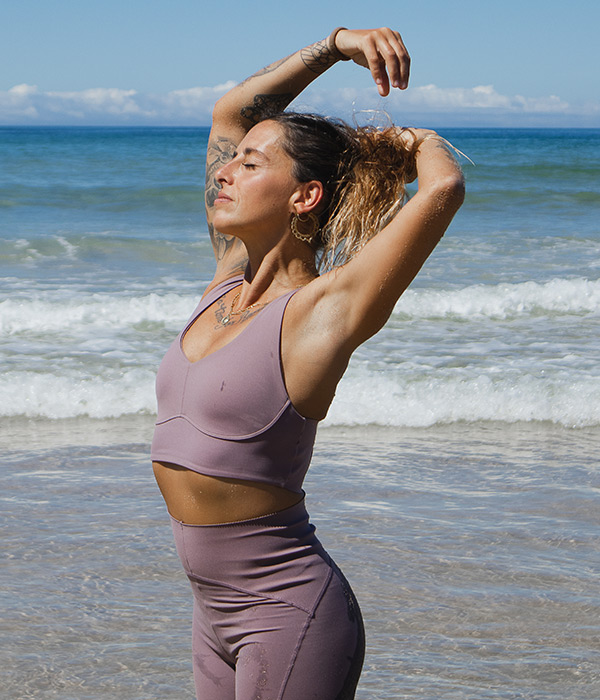
How did you get into surfing and what do you love about it?
Despite growing up by the ocean, it wasn’t until later in life that I started surfing. When I was 26 years old, and needing a bit of a change in my life, I decided to try out a couple of surf classes. As I was about to travel to Latin America alone, I kinda wanted to see if this was something I’d see myself doing over there. Needless to say, this is what made me stay in Latin America for a year instead of the initial plan of one month. I feel that surfing gave me back my power and my confidence in myself. It is a constant challenge and at the same time the greatest source of peace and mental equanimity, making you ride that momentum where when you’re riding a wave, literally nothing else exists, and it’s just pure bliss and connection.
How stoked are you to be doing yoga for our Premium members. What can they expect?
I’m so thrilled to have the chance to be a part of this platform and this community. It feels like my life in a nutshell, and being able to pass on all the knowledge I have gathered in my work and my personal experience, with years of teaching and practising for myself, is honestly such a gift.
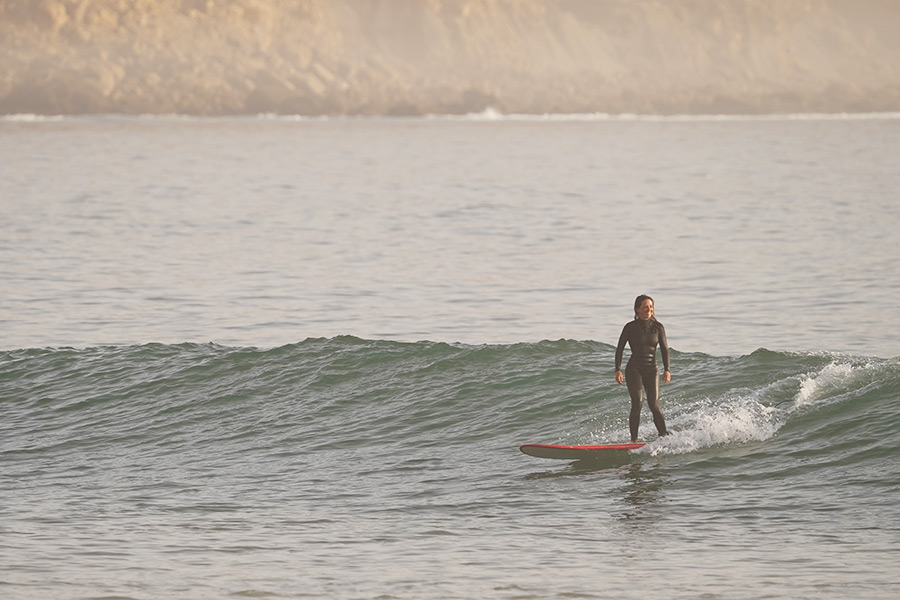
Can you describe your yoga style and why is yoga so good for us?
My yoga style ranges from flowy vinyasa to grounding and relaxing restorative sessions, depending on what’s needed that day. Some days it’s all about movement, breath, and energy flow, other days it’s slowing right down, releasing tension, and letting the body recover. Yoga is so good for us because it creates that balance, we move better, feel more connected, and stay more present. It’s not just stretching, it’s strength, mobility, breath, and mindset. Yoga keeps you aligned both physically and mentally.
How does yoga for surfers differ from a typical yoga class?
Yoga for surfers is built with the ocean in mind. We target muscles that get overworked while paddling and open up areas that tighten from long surf sessions, like shoulders, hips, and lower back. It’s less about advanced poses and more about restoring function, building core stability, and syncing breath with movement. We move with intention, focusing on flow, recovery, and staying injury-free. While a typical yoga class might aim for full-body flexibility, surf-specific yoga is practical, it keeps you loose, strong, and better prepared to read waves and move efficiently.
What are the main things you focus on in yoga – flexibility, balance, injuries?
It’s a balance of all three: flexibility, balance, and injury prevention, but always with a purpose. I focus on mobility over just flexibility, helping joints move through their full range with control. Balance work improves board control and reaction time. And injury prevention is key, we work on stabilizing smaller muscle groups that don’t always get attention, especially in shoulders and knees. Surfing is demanding on the body, so the goal is to build resilience, smooth out imbalances, and keep you in the water longer and with more ease.
How can yoga practice contribute to a longer, healthier surfing life?
Yoga is like maintenance for surfers. It keeps your body mobile, your mind clear, and your movements efficient. As we age or surf harder, imbalances creep in, yoga helps you catch those early. By improving joint health, breath control, and recovery, yoga reduces the risk of chronic injuries and burnout. Surfing well into your 50s, 60s, or beyond is totally possible if you treat your body like an athlete’s, and yoga is part of that toolkit.
What are your top 3 yoga poses and why are they so good?
So hard to choose just 3, but here we go:
1. Downward Dog – It’s a go-to because it stretches the entire back body, from calves to hamstrings to shoulders. You can also move in it to stretch through the side body and really lengthen out the spine. After paddling and being compressed on a board, it’s magic.
2. Hip openers (like Pigeon or Lizard) – These are essential after surfing. They release deep tension in the glutes and low back, which can get super tight from constant crouching and pop-ups.
3. Reclined Twist – Nothing beats that feeling of releasing along the spine. Every little crack helps you feel more aligned and grounded, like everything falls back into place.
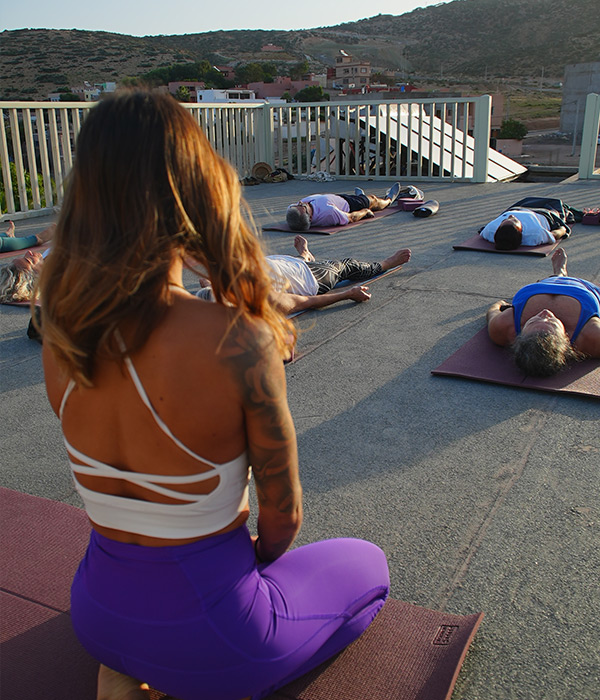
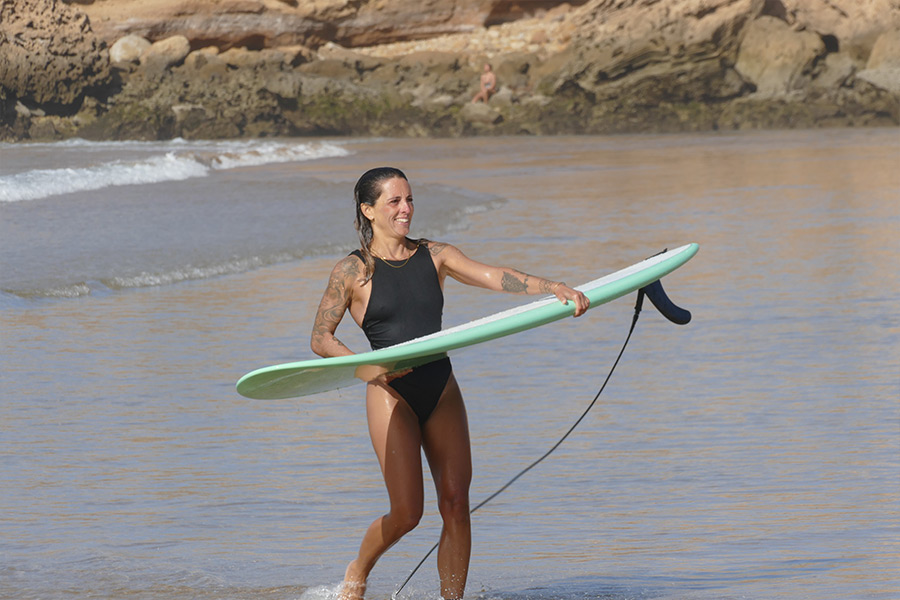
How often should we be practising a week?
Ideally, aim for 2-3 times a week, even if it’s just 10–15 minutes, consistency is key. It’s better to do short, regular sessions than one long class every now and then. If you’re surfing a lot, even a short recovery-focused flow or some breathwork can make a huge difference. On non-surf days, go a little deeper, work on mobility, balance, and core strength. Listen to your body, if you’re tight, hit the mat. If you’re tired, use yoga to recover. Make it part of your lifestyle, not a chore.
What’s the most surprising feedback you’ve had from surfers who do yoga with you?
Many surfers are surprised by how quickly yoga helps them tune into their bodies. The gains in core strength and flexibility are clear, but it’s the increased awareness, physically and mentally, that really lands. Yoga teaches you to understand your breath, your limits, and how to stay calm under pressure, which is huge during wipeouts or long hold-downs. But it also helps you move better, recover faster, and feel more connected to how your body works. For a lot of people, the big realization is that surfing and yoga aren’t just complementary, different expressions of the same flow
Any myths about yoga for surfers that you’d like to bust?
A big myth is that you need to be flexible to start yoga. The truth is, yoga builds flexibility, it meets you where you are and gradually opens the body up, you don’t need to touch your toes or fold into a pretzel. For surfers, it’s not about how deep you get into a pose, but how connected you are to your movement and breath. What starts as physical, stretching tight hips, releasing shoulders, strengthening the core, often shifts into something much deeper. Yoga works from the outside in, and over time, it sharpens your focus, teaches you how to breathe through intensity, and helps you stay calm when it counts, like during a hold-down or in critical moments on a wave. It’s not just about recovery or injury prevention, it’s a full-spectrum practice that supports both your body and your mindset, in and out of the water.
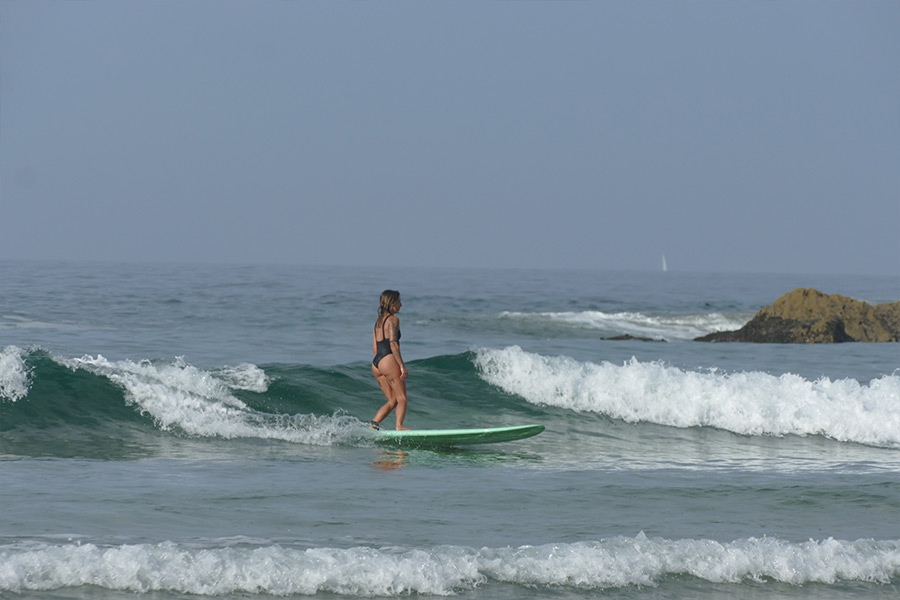
Try a yoga class with Ines…



